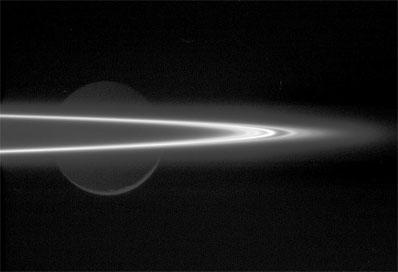
Spaceflight Now +

|

|

|

|

Premium video content for our Spaceflight Now Plus subscribers.

Science of New Horizons
 The first robotic space mission to visit the distant planet Pluto and frozen objects in the Kuiper Belt is explained by the project's managers and scientists in this NASA news conference from the agency's Washington headquarters on Dec. 19. The first robotic space mission to visit the distant planet Pluto and frozen objects in the Kuiper Belt is explained by the project's managers and scientists in this NASA news conference from the agency's Washington headquarters on Dec. 19.

 Dial-up | Broadband Dial-up | Broadband

Shuttle program update
 Bill Gerstenmaier, NASA associate administrator for space operations, discusses the latest space shuttle program news, including the decision to remove the PAL foam ramp from future external fuel tanks, during this December 15 teleconference with reporters. Bill Gerstenmaier, NASA associate administrator for space operations, discusses the latest space shuttle program news, including the decision to remove the PAL foam ramp from future external fuel tanks, during this December 15 teleconference with reporters.

 QuickTime | For iPod QuickTime | For iPod

Remembering Gemini 6
 The Gemini 6 mission launched from the Cape at 8:37 a.m. December 15, 1965 to rendezvous with the orbiting Gemini 7 spacecraft. The rendezvous occurred and Gemini 6 safely returned to Earth. The Gemini 6 mission launched from the Cape at 8:37 a.m. December 15, 1965 to rendezvous with the orbiting Gemini 7 spacecraft. The rendezvous occurred and Gemini 6 safely returned to Earth.

 Play video Play video

New views of icy moons
 NASA's Cassini spacecraft orbiting Saturn is wrapping up a phenomenally successful year of observing the mysterious icy moons, including Enceladus, Dione, Rhea, Hyperion and Iapetus. NASA's Cassini spacecraft orbiting Saturn is wrapping up a phenomenally successful year of observing the mysterious icy moons, including Enceladus, Dione, Rhea, Hyperion and Iapetus.

 Play video Play video

 Become a subscriber Become a subscriber
 More video More video

|

|

|

|
|

|

Bright arc of ice
CASSINI PHOTO RELEASE
Posted: December 20, 2005

Credit: NASA/JPL/Space Science Institute
Download larger image version here
|
The searing arc of light seen here is Saturn's icy F ring, seen nearly edge-on. In the background, Rhea (1,528 kilometers, 949 miles across) is lit by reflected light from Saturn and the rings, with only the slightest sliver of light at its bottom being from direct sunlight.
The faint material surrounding the F ring likely lies in the planet's equatorial plane, extending radially farther out and in from the main F ring core. A smaller fraction of this material could be vertically extended, and Cassini's investigations should help to clarify this.
The image was taken in visible light with the Cassini spacecraft narrow-angle camera at a distance of approximately 689,000 kilometers (428,000 miles) from Saturn. The image scale is approximately 4 kilometers (2 miles) per pixel.
The Cassini-Huygens mission is a cooperative project of NASA, the European Space Agency and the Italian Space Agency. The Jet Propulsion Laboratory, a division of the California Institute of Technology in Pasadena, manages the mission for NASA's Science Mission Directorate, Washington, D.C. The Cassini orbiter and its two onboard cameras were designed, developed and assembled at JPL. The imaging operations center is based at the Space Science Institute in Boulder, Colo.
|

|

|

|

|



